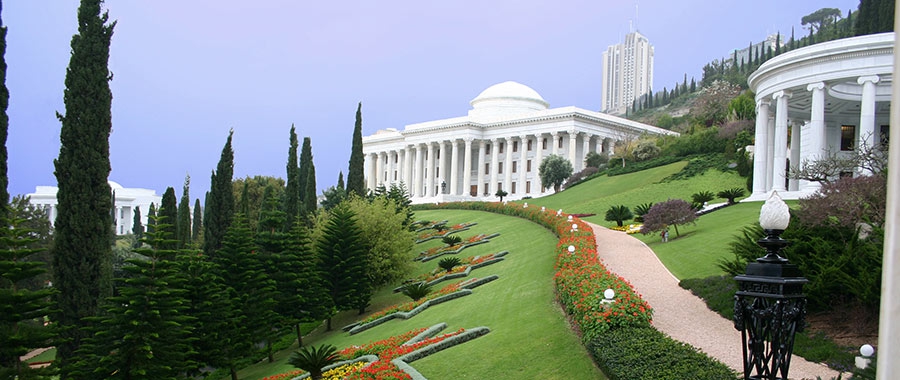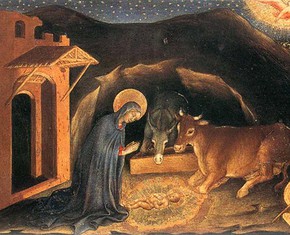The views expressed in our content reflect individual perspectives and do not represent the authoritative views of the Baha'i Faith.
In ages past, the structure of religious communities was determined almost entirely by a prophet’s followers, sometimes by trial and error.
Through consensus, committee, and the borrowing of concepts from older forms of faith, a clergy, traditions, rituals, and doctrines got cobbled together over time. Often they arose out of necessity, patterned on what was familiar to those doing the designing. Sometimes they arose as a result of corruption, power politics and state intervention, contravening the clear instructions of the original founder of the Faith.
In complete contrast to those past practices, the structure of the Baha’i Administration was designed by Baha’u’llah himself, and erected by his eldest son, Abdu’l-Baha and his great-grandson, Shoghi Effendi:
As regards the meaning of the Baha’i Covenant: The Guardian considers the existence of two forms of Covenant both of which are explicitly mentioned in the literature of the Cause. First is the Covenant that every Prophet makes with humanity or, more definitely, with His people that they will accept and follow the coming Manifestation … The second form of Covenant is such as the one Baha’u’llah made with His people that they should accept the Master (Abdu’l-Baha). … Under the same category comes the Covenant the Master made with the Baha’is that they should accept his Administration after Him. – written on behalf of Shoghi Effendi, Directives from the Guardian, p. 15.
This means that the Baha’i Faith derives its structure, its administrative order and its ongoing unity not from an invention of the Baha’is themselves, but from a divinely-ordained mechanism built into the teachings of the Faith from the very beginning:
It should be remembered by every follower of the Cause that the system of Baha’i administration is not an innovation imposed arbitrarily upon the Baha’is of the world since the Master’s passing, but derives its authority from the Will and Testament of Abdu’l‑Baha, is specifically prescribed in unnumbered Tablets, and rests in some of its essential features upon the explicit provisions of the [Most Holy Book]. It thus unifies and correlates the principles separately laid down by Baha’u’llah and Abdu’l‑Baha, and is indissolubly bound with the essential verities of the Faith. To dissociate the administrative principles of the Cause from the purely spiritual and humanitarian teachings would be tantamount to a mutilation of the body of the Cause, a separation that can only result in the disintegration of its component parts, and the extinction of the Faith itself. – Shoghi Effendi, The World Order of Baha’u’llah, p. 5.
As Shoghi Effendi alludes to here, the foundational charter for the Baha’i Administrative Order can be found in a variety of documents penned by Baha’u’llah. These include: The Will and Testament of Baha’u’llah; The Book of the Covenant; and Baha’u’llah’s Most Holy Book, his Book of Laws.
They are also found in The Will and Testament of Abdu’l-Baha; and in Shoghi Effendi’s books The World Order of Baha’u’llah, The Advent of Divine Justice and Baha’i Administration.
Shoghi Effendi’s remarks about dissociating the administrative and spiritual principles of the Baha’i Faith are especially significant taken together with Baha’u’llah’s abolition of the clergy. Other core principles of his teachings are of crucial importance in this context: the independent investigation of truth, universal education, equality of the sexes, and spiritual solutions to problems endemic to human society, such as poverty, classism, and nationalism. The Baha’i administrative order is very much about bringing material reality into alignment with spiritual reality.
The spiritual teachings of Baha’u’llah were not meant solely to save individual souls, but to edify and contribute to the progress and salvation of the human species as a whole. So, while practicing these teachings and principles in the confines of current political structures is a necessary stage in the development of the Faith and of humanity as a whole, the Baha’i teachings present us with a larger purpose and Plan, of which the Baha’is are only a part:
Let there be no mistake. The principle of the Oneness of Mankind—the pivot round which all the teachings of Baha’u’llah revolve—is no mere outburst of ignorant emotionalism or an expression of vague and pious hope. Its appeal is not to be merely identified with a reawakening of the spirit of brotherhood and good-will among men, nor does it aim solely at the fostering of harmonious cooperation among individual peoples and nations. Its implications are deeper, its claims greater than any which the Prophets of old were allowed to advance. Its message is applicable not only to the individual, but concerns itself primarily with the nature of those essential relationships that must bind all the states and nations as members of one human family. It does not constitute merely the enunciation of an ideal, but stands inseparably associated with an institution [the Baha’i administrative order] adequate to embody its truth, demonstrate its validity, and perpetuate its influence. It implies an organic change in the structure of present-day society, a change such as the world has not yet experienced. – Shoghi Effendi, The World Order of Baha’u’llah, p. 43.
Next, we’ll look at some of the key features of Baha’i administrative institutions.
You May Also Like
Comments

















Baha'is concede (excluding a few schismatics) that no Guardian has existed since S. Effendi's death sixty years ago. Hence any conclusion that the unique and compelling character of the Covenant remains intact today seems highly problematic. Baha'is are in the same boat with every ...other religion - lacking contemporary prophetic guidance.